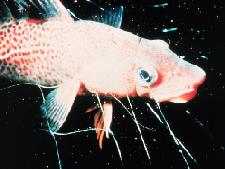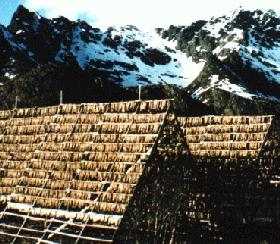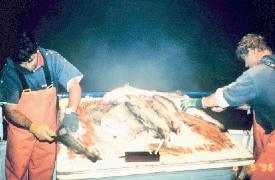|
Cod are also caught as a by-catch in mixed fisheries, such as haddock, whiting, flatfish, shrimp and prawn fisheries.
The situation is so serious that ICES is recommending these fisheries as well as the cod fishery itself should be closed unless they can demonstrate that they are not causing a cod by-catch.
In fisheries where cod comprises solely an incidental catch, there should be stringent restrictions on the catch and discard rates of cod, the council said, and called for effective monitoring of compliance with those restrictions.
The advice of ICES' Advisory Committee on Fisheries Management forms the main scientific input to European Union ministers' annual round of bargaining over total allowable catches and national quotas, which this year threaten to be even more acrimonious than usual.
Stocks of several other commercially caught fish species, such as hake, whiting, eel and plaice, are also close to or outside safe biological limits in some sea areas, the ICES report concludes.
The council blames a method of catching fish using large pelagic, deep sea, trawls that capture all marine life in their path for the sharp decline in cod.
The pelagic fishery targets cod during the summer now, opening a whole new season. The smaller trawling vessels that once dominated the cod fishery targeted spawning cod in spring and juvenile cod in autumn and winter.
Europeans need only look across the North Atlantic
to see what could be in store for their cod fishery.
In 1992, the collapse of the cod stocks off the east
coast of Newfoundland forced the Canadian
government to close the fishery. Over 40,000 people
lost their jobs.
Once the most productive cod fishing area in the
northwest Atlantic, the cod fishery off southern
Labrador and to the east of Newfoundland yielded
an estimated annual catch of 250,000 tons for more
than 100 years before the mid-1950s.
|


